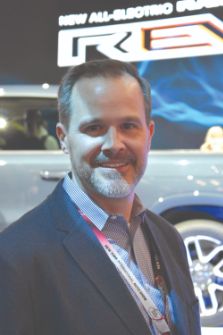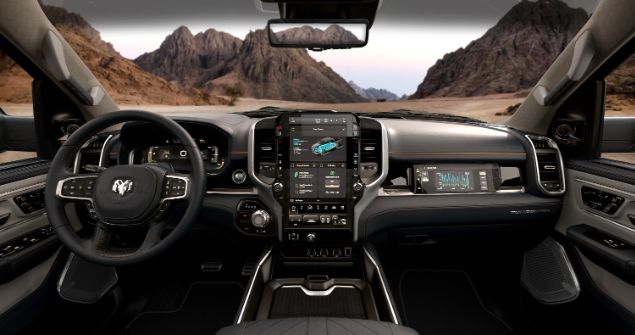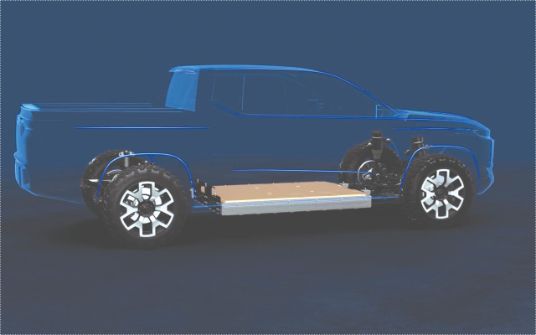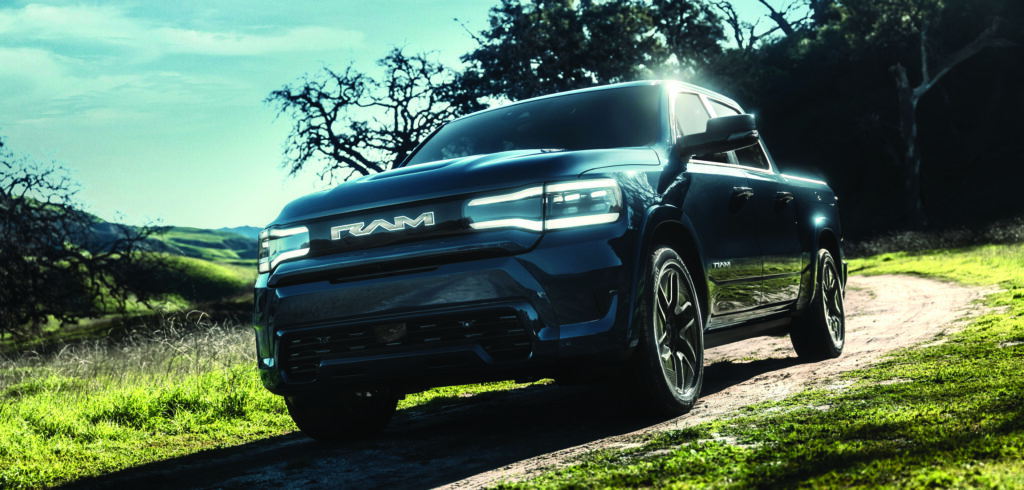ATTI gets an exclusive development update on Ram’s first electric pickup truck, which is scheduled to launch in late 2024.
After a slow start, the Stellantis EV offensive is gathering pace in North America. The company plans to bring 25 BEVs to that market by 2030 yet perhaps none will be as important as the 2025 Ram 1500 REV, which will be the first vehicle on the new STLA Frame EV platform.
The pickup was recently unveiled in prototype form at the New York International Auto Show, where ATTI caught up with the latest from the program. Led by senior manager of vehicle synthesis Doug Killian, the Ram team is currently running development vehicles built with parts from prototype tooling.
“We’re into the representative hardware phase of the program,” he explained. “Some of that is simply to correlate to the simulations and modeling that we’ve done, taking advantage of the economy of doing work virtually. Every prototype we build is extremely expensive and therefore we work to minimize them, but each is extremely valuable.
 “We can confirm elements of the simulation in hardware, adjust our model and keep developing in simulation, then come in with a later prototype to do our true production validation later in the phase.”
“We can confirm elements of the simulation in hardware, adjust our model and keep developing in simulation, then come in with a later prototype to do our true production validation later in the phase.”
The first vehicles from production tooling will be built in the autumn. Such is the team’s faith in the digital tools that at the time of writing it had yet to crash a physical prototype.
“We’re not crashing vehicles to learn something anymore, we’re crashing them to confirm what we’re seeing in CAE,” Killian continued. “We will build later versions to do some of that confirmation work. In some cases, we may do some energy tests on a frame component, just to confirm how a part is going to buckle or dissipate its energy. But the virtual tools are so good that it’s literally throwing money away to build the vehicle and then to crash it, only to learn something. It’s not efficient.”
 Global resources
Global resources
Ram’s USA-based engineers aren’t short of experience when it comes to truck development. In addition, there’s in-house knowledge of electrical packaging to leverage from Chrysler and Jeep PHEVs, while Grand Wagoneer has similar architecture to the 1500 REV, with body-on-frame construction and independent rear suspension. Nevertheless, input from Stellantis colleagues in Europe has been invaluable, including in HMI, where, according to Killian, “the European side of our business has more knowledge and feedback” on the electric driving information customers want to see on the Uconnect 5 infotainment screen.
There’s collaboration on the powertrain itself, too. Joe Tolkacz, chief propulsion systems engineer, told us that it goes beyond building on the experience of the in-house PHEVs – important as that is – or sharing electric drive modules (EDMs) with upcoming vehicles on the STLA Large platform.
Ahead of the second-gen EDMs that will appear in the 1500 REV, lessons are being learned from the Gen-1 electric drive systems fitted to the Ram ProMaster EV (Fiat e-Ducato) van and certain Maserati models. The same applies to the new truck’s battery pack, which is projected to offer 563km or 805km of range.
“The European side is a little ahead of FCA [North America] from the perspective of building a battery pack,” said Tolkacz. “They had a pack design that they had optimized, so when we came with our first pack design, we did a deep dive [with them] on where we were different. It was very helpful to have that [knowledge] in-house. We have the advantage of a global network and we’re using people throughout the world on the propulsion side.”
 All hands on deck
All hands on deck
When it comes to designing and validating the pickup’s V2X charging capabilities, however, the team is working from a clean sheet. The truck can send power to a home during a storm or power a jobsite from a 7.2kW power panel in the bed. As such, the electrical design is no longer just to automotive standards but must also meet the home-wiring stipulations of the National Electrical Code.
“The intersection of the two codes has created questions because it’s something no one’s thought about before. We’ve had to call on the opinions of industry experts.”
He’s enjoyed the process of developing the use models that shape the test program for the V2X features. The team surveyed professionals and Tolkacz even quizzed the tradesmen who built his new deck.
“The guys that came to my house were plugging into the wall to run their circular saws but could potentially run it off the truck, so I talked to them about how they use them,” he recounted. “We’ve used [drive] batteries on our vehicles and have good durability correlation from customers, but we don’t have data on the V2X features. How will people use them? Will they use the truck every day as a portable generator? Will a tradesman run circular saws every day, for eight hours continuously?
“It’s been very interesting to develop the use models for these new features, but we’ll have to tweak the models as we learn more. Customers will find new ways to use them that we haven’t thought of yet – and that they haven’t thought of yet – so [in the future] we might have to modify our test protocols accordingly.”
Standard procedure
Killian won’t be drawn on the precise development timescale but says the program duration is similar to a regular Ram 1500’s due to the new frame loads from the battery pack and suspension hardpoint differences compared with earlier products.
The REV is also undergoing the same testing as any Ram 1500, including cold-weather work in northern Michigan, a hot-weather program, durability runs at the Chelsea Proving Grounds in Michigan and trailer-tow testing at Davis Dam in Arizona.


